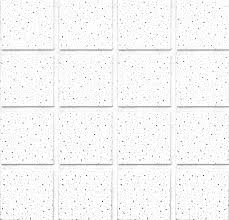Dec . 31, 2024 12:41 Back to list
Innovative Design Solutions for T-Bar Ceiling Grid Systems in Modern Interiors
The Importance of T-Bar Ceiling Grids in Modern Architecture
In the realm of modern architecture and interior design, the T-bar ceiling grid remains an essential element that combines both functionality and aesthetic appeal. Frequently employed in commercial, institutional, and residential spaces, T-bar ceiling grids serve as the backbone for suspended ceilings, supporting materials like acoustic tiles, drywall, and other finishes. Understanding the significance of T-bar ceiling grids illuminates their impact on interior environments.
Structural Integrity and Versatility
T-bar ceiling grids are primarily constructed from lightweight materials, often steel or aluminum, designed to create a robust framework that can accommodate a variety of ceiling materials. The system consists of main runners, cross tees, and wall angles that form a grid layout, enabling easy installation and adaptability within a space. Their modular nature allows architects and designers to customize ceiling designs tailored to specific needs, enhancing versatility.
This framework not only supports ceiling panels but also conceals essential building systems, such as electrical wiring, plumbing, and HVAC ducts. This capability is crucial in maintaining the cleanliness and overall aesthetics of a space, while enabling quick access for maintenance and repairs.
Acoustic Benefits
One of the standout advantages of T-bar ceiling grids is their ability to support acoustic panels. In settings such as offices, schools, and healthcare facilities, noise control is paramount. A well-designed T-bar ceiling grid, paired with the right acoustic materials, can significantly reduce sound transmission, creating a conducive environment for work and learning. Acoustic ceilings help dampen noise, reduce echoes, and enhance speech intelligibility, improving overall communication and productivity.
t bar ceiling grid

Energy Efficiency and Lighting
Another benefit of T-bar ceiling grids is their contribution to energy efficiency. By allowing for the integration of energy-efficient lighting systems, T-bar ceilings can play a crucial role in reducing energy costs. Designers can strategically place lighting fixtures within the grid to maximize illumination while minimizing energy consumption. Additionally, some T-bar ceiling systems are compatible with LED technology, further enhancing energy efficiency and sustainability.
Aesthetic Appeal
Beyond functionality, T-bar ceiling grids can enhance the visual impact of a room. Designers have the flexibility to choose from an array of ceiling tiles in various colors, textures, and designs, enabling them to create sophisticated interiors. Whether aiming for a modern, industrial look or a more traditional, elegant finish, the T-bar ceiling grid system can be customized to fit a myriad of design styles, effectively transforming an ordinary space into an extraordinary one.
Conclusion
In summary, T-bar ceiling grids are an integral component of contemporary design, marrying functionality with aesthetic versatility. Their structural integrity, acoustic benefits, energy efficiency, and visual appeal make them an ideal choice for diverse applications across different sectors. As we continue to evolve in our understanding of interior environments, T-bar ceiling grids will undoubtedly play a pivotal role in creating spaces that are not only beautiful but also practical and efficient. Whether for an office, a school, or a healthcare facility, implementing a well-designed T-bar ceiling grid can yield significant advantages, enhancing the quality of life for occupants while reflecting modern architectural trends.
-
Durable Ceiling T Grid Systems | Easy InstallationNewsAug.29,2025
-
PVC Gypsum Ceiling: Durable, Laminated Tiles for Modern SpacesNewsAug.28,2025
-
Pvc Gypsum Ceiling Is DurableNewsAug.21,2025
-
Mineral Fiber Board Is DurableNewsAug.21,2025
-
Ceiling Tile Clip Reusable DesignNewsAug.21,2025
-
Ceiling T Grid Modular DesignNewsAug.21,2025







